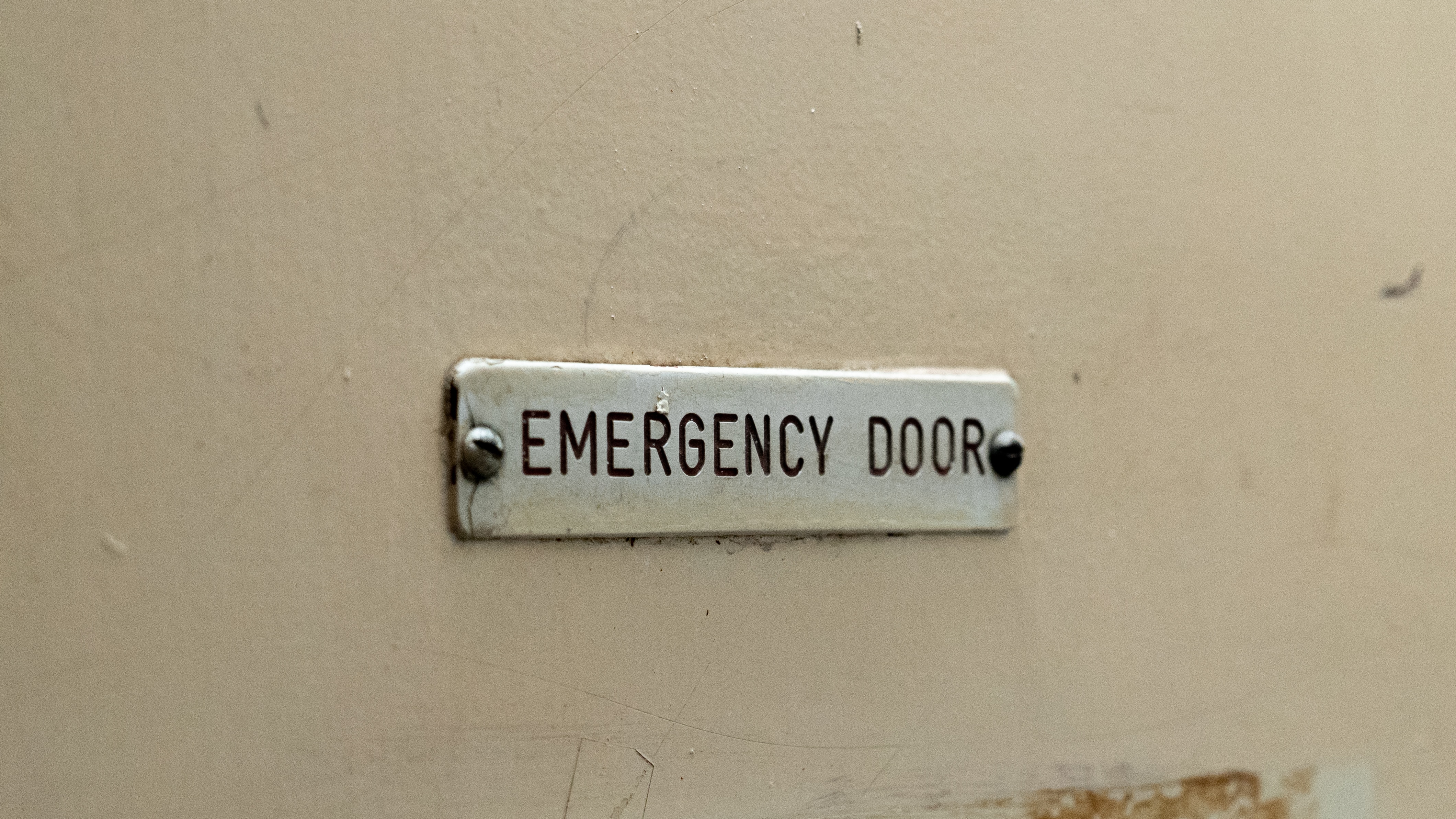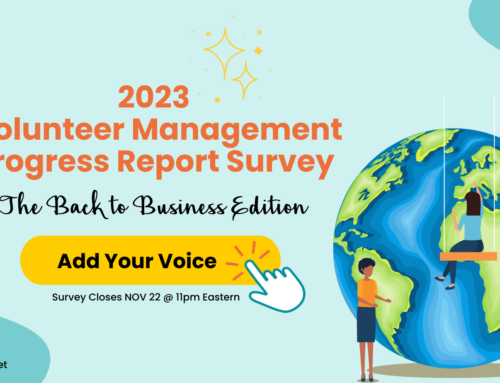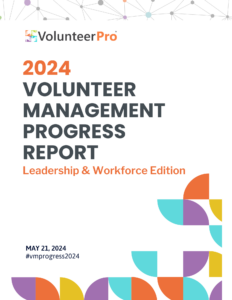 Nonprofit Emergency Plans: What You Need to Know
Nonprofit Emergency Plans: What You Need to Know
When the unexpected strikes, nonprofit emergency plans can prepare volunteer organizations and programs to respond appropriately.
The complete and continued devastation caused by the wildfires in Australia, as well as other locales in recent years, has many of us asking — are we ready, even for what we can’t imagine happening?
It’s human nature to put off planning for something we don’t think is likely to take place. It’s tedious, unpleasant, and even downright scary.
But it doesn’t mean we shouldn’t do it.
Certainly, if you are a relief organization, you already have a proven series of standard operating procedures that guide your practice.
But, what about others?
If a disaster were to strike, would you be able to recover and not only maintain your volunteer corps, but effectively mobilize them as a valuable valued asset for disaster recovery?
If you have a plan in place, does it include how volunteers will be handled and more importantly, are volunteers aware of and trained on what’s expected?
Maybe it’s time to take disaster preparation seriously. Maybe nothing will happen; but if it does, wouldn’t you feel better if you did everything you could to ensure that people were safe and your organization could survive and rebound?
Three Kinds of Nonprofit Emergency Plans for Volunteer Organizations
Depending on the situation, organizations often need one or all of the following plans in place:
- An Emergency Safety Plan to ensure that in an emergency (man-made or natural) everyone would know what to do to keep themselves safe
- A Business Continuity Plan to ensure that time-sensitive and critical organization processes can continue or be resumed quickly
- A Volunteer Mobilization Plan to ensure that volunteers who want to help can be engaged in response and recovery efforts, whether at their home agency or as a referral to local relief organizations to assist
Emergency Safety Plan

At its most basic, the Emergency Safety Plan is something that all organizations should have in place to ensure volunteers, clients, staff, etc. are safe.
One simple way to prepare is to pull together a task force of staff, board, volunteer leaders, and community partners to create your plan.
Below are a few questions to get you started and links to resource materials you can use to develop this plan.
Questions to Ask:
Administrative Issues
- Can you access your computer files from offsite?
- Are your team’s files backed up automatically?
- Are electronic copies of any critical paper files maintained?
- Is there computer hardware available for use offsite, in the event your building(s) are destroyed or inaccessible?
- Is your insurance coverage adequate, and do you know who to contact to initiate a claim?
Personnel Risks
- Do staff and volunteers know how to evacuate and where to convene safely in the event of a crisis during business hours?
- Do you have a plan for quickly assessing how many people may remain in your building(s) after a hazardous event?
- Do staff and volunteers know where to get post-event status updates?
- Do staff and volunteers have contingency plans for adjusted work hours or work sites?
- Is everyone certified in first aid and CPR?
- Does everyone have access to an Emergency Supply Kit?
Community Outreach Planning
- Do you have a communication plan in place that can be deployed quickly if assistance is needed, either in the form of donations or volunteers?
- Do you have a way to contact clients in the event of a change in services?
- Have you formed partnerships with other local organizations to provide mutual assistance in the event of an emergency?
For a more comprehensive look at how to prepare, check out the US Federal Emergency management Agency’s (FEMA’s) preparedness checklists and toolkits.
Of particular note is the Emergency Response Plan for businesses that can be used to start a discussion at your organization. Also, the American Red Cross has a Ready Rating system that organizations can use to assess their preparedness.
While FEMA focuses primarily on natural disasters, unfortunately, in today’s world man-made crises, such as mass shootings, can be equally if not more devastating.
While the prospect is stressful and even controversial to contemplate, volunteer organizations owe it to their supporters, clients, and staff to take active shooter preparedness seriously and to have a plan in place.
The Unitarian Universalist Association recommends that faith-based planning teams ask themselves the following questions. They are equally helpful and relevant for secular nonprofits and public sector organizations.
- How will we evacuate or lockdown personnel and visitors?
- How will we evacuate when the primary evacuation routes are unusable? Where will we go when the primary emergency meeting point is compromised?
- How can we select effective shelter-in-place locations?
- How will those present in buildings and on the grounds be notified that there is an active shooter incident underway?
- What will our instructions be for congregants: Run, Hide, Fight? Alert, Lockdown, Inform, Counter, Evacuate?
- How will everyone know when buildings and grounds are safe again?
Finally, Emergency Safety Plans should also include how the agency plans to communicate in a crisis to various audiences including:
The following is a list of potential audiences. Messages should be scripted to meet the needs of each audience, and a team of staff members should be designated spokespeople to whom all questions are routed based on the audience.
- Clients & Customers
- Survivors impacted by the incident and their families
- Employees and their families
- Volunteers and their families
- News media
- Community—especially neighbors living near the facility
- Agency leadership and board of directors
- Government elected officials, regulators and other authorities
- Vendors, subcontractors, and suppliers
- Community partners
Business Continuity Plan
 While the Emergency Safety Plan focuses more on how to prepare and what to do during a crisis, continuity planning involves ensuring that systems and infrastructure are in place that can either withstand a crisis or can be restarted with minimal loss of data or operational integrity.
While the Emergency Safety Plan focuses more on how to prepare and what to do during a crisis, continuity planning involves ensuring that systems and infrastructure are in place that can either withstand a crisis or can be restarted with minimal loss of data or operational integrity.
A consideration of the special case of volunteers is vital to this process. Without a plan in place, agency’s risk losing part or all of their volunteer corps either because they are unaware of when and how they can return to work, or they believe the workplace is no longer safe.
Either can spell disaster for nonprofits that will need volunteers now more than ever.
The United Way of North Carolina suggests the following four-step process in their continuity plan template.
- Step 1: Identify and Assess Possible Risks
- Step 2: Understand Your Organization and the Elements that are Most Vital to Your Mission
- Step 3: Create a Business Continuity Plan that includes Mitigation, Preparedness, Reality Check, Response, and Recovery
- Step 4: Train, Test and Maintain Plan Going Forward
Some of the areas to be considered when it comes to keeping the doors open or at least preventing undue loss are the following:
- Data privacy and back up
- Chain of command, primary and secondary
- Communications to staff, volunteers, and the public (telephone, email, social media, etc.)
- Onsite security
- Alternate services and site
- Alternate suppliers, subcontractors, or vendors
- Insurance reporting and claims\logistical concerns like office supplies, internet connection, finance, etc.
The Alliance for Human Services has created a Continuity of Operation Plan (COOP) for Nonprofit Human Services Providers template that is particularly helpful when thinking through what should be included.
Volunteer Mobilization Plan
 When man-made tragedy strikes, particularly when it involves violence or danger, leaders of volunteers may be reluctant to involve volunteers further. Indeed, violence perpetrated against public sector leaders and organizations affect the willingness of people to volunteer and serve, particularly in those areas where conflict runs high.
When man-made tragedy strikes, particularly when it involves violence or danger, leaders of volunteers may be reluctant to involve volunteers further. Indeed, violence perpetrated against public sector leaders and organizations affect the willingness of people to volunteer and serve, particularly in those areas where conflict runs high.
You might ask — will more people volunteer as a show of solidarity or will less because they fear for their safety? Or will things stay the same, business as usual? Hard to say.
Whether the crisis is natural or man-made, it’s important to examine the possible risk to volunteers. Before tragedy strikes, public sector and nonprofit organizations should take the opportunity to review what they can do to ensure the safety of their staff and volunteers, particularly if they are to engage them in recovery efforts on behalf of the organization.
There are ways to reasonably protect your staff and volunteers from unsafe situations, whether they are in the midst of a crisis or during daily operations
Here are a few ideas:
1) Conduct Background Checks for Peace of Mind — Require both criminal background checks and reference checks (with former employers or volunteer supervisors) of both staff and volunteer applicants. If your team will be working alone with vulnerable populations, such as children or the disabled or frail, do FBI checks with fingerprints.
Worried about the cost? Ask your prospective volunteers to pay for their background checks. Worried about what they will think? If they understand why you are asking (to protect both the clients and the volunteers), they will understand. If they don’t, they probably won’t understand any other requirements your agency has. They’re not a good fit; let them go.
2) Buddy Up — If at all possible, have volunteers work together in a public place or at the agency’s site. If you must do home visits, pair volunteers and staff with another person. It’s not only safer, but it also protects the reputation of your organization and the team from claims of impropriety made by unbalanced clients.
If volunteers absolutely must do home visits solo, make sure your team is well trained on what they can and cannot do and they have a cell phone on hand. There’s no easier place than a private home for professional boundaries to be crossed, however well-intentioned.
3) Take ALL Complaints Seriously — Investigate all complaints thoroughly and quickly, whether from your team or clients. Make sure the process for making complaints is posted and available to everyone.
Don’t assume you know what happened. Be sure to speak to more than one person and consider all perspectives before forming a conclusion and response. Everyone, regardless of their role, should be trained on how to respond to a complaint and how to react in a crisis.
4) Allow Volunteers to Opt-Out if they Feel Uncomfortable — If your team has a “gut feeling” that a service site or client is unsafe, find an alternative service strategy. Similarly, if volunteers don’t feel comfortable helping in a crisis, don’t coerce them. They have a right to set limits.
Be careful about discrimination, though. You must assess whether a volunteer’s discomfort has to do with some kind of bias, which should not be permitted. If you encounter bias, straight talk about your agency’s anti-discrimination policy is in order.
5) Get it in Writing — Make sure you have solid policies and procedures that protect clients, staff, and volunteers, and include your confidentiality rules during crises. Let them know if anything changes.
Also, don’t forget to make volunteers aware of any state or federal laws, like the Volunteer Protection Act, that protect them. These laws are only valid when volunteers are working within their scope, training, and authorization. So, if you re-assign a volunteer to assist with recovery, make sure you provide a new position description, requisite training and have them sign and date a revised volunteer agreement that covers their new role(s).
Develop Your Volunteer Safety Plan: A Few Questions You Should Ask
Finally, if you plan to mobilize volunteers, ask and answer the tough questions before those situations occur. Emergencies tend to bring out both the best and worst in people. So, be sure you’ve established standards of behavior that everyone is expected to follow.
Here are a few things to consider:
- In what cases will volunteers be engaged to assist with recovery? In what cases would they not?
- What roles will volunteers play in helping your organization get back on its feet?
- Who can your team contact if they have questions or need immediate backup?
- Is there an emergency gathering place for each service site? What about a backup spot if that place isn’t available?
- When is it OK to call the police?
- How should your team attempt to de-escalate an agitated person?
- What personal information can be shared and with whom and when during special circumstances?
- What should be done if child abuse, domestic violence, or elder abuse is suspected?
- Can service be denied when a client is acting inappropriately? If so, under what circumstances?
- Is there a hotline your volunteer team can call to get updates after a crisis?
- If a crisis occurs, how will your agency handle public communications? How can your team support this strategy?
- Where can your team get First Aid & CPR training? Will the agency pay for it?
When organizations and volunteers are prepared for a possible break in regular business, they may be more likely to return and continue to serve once things return to normal. But, if you have no plan in place to keep them in the loop (and even engaged, if it’s appropriate) your agency may experience a drain on your talent.
Alternately, if you have organized plans in place, and volunteers know what to expect, you’ll be more likely to keep them coming back with clear communications and well-organized roles that help you get back on your feet.
Even if your organization does not need help, you can organize teams of volunteers that might be interested in being “lent” to other organizations to help out during a time-limited period, making you the kind of compassionate and helpful community partner everyone needs in times of stress.
Share Your Experience
Has your organization weathered a crisis or had a safety issue? What did you learn? What would you do differently?
Please share in the comments below. We’d love to hear about it.






… [Trackback]
[…] Read More: volpro.net/nonprofit-emergency-plans/ […]